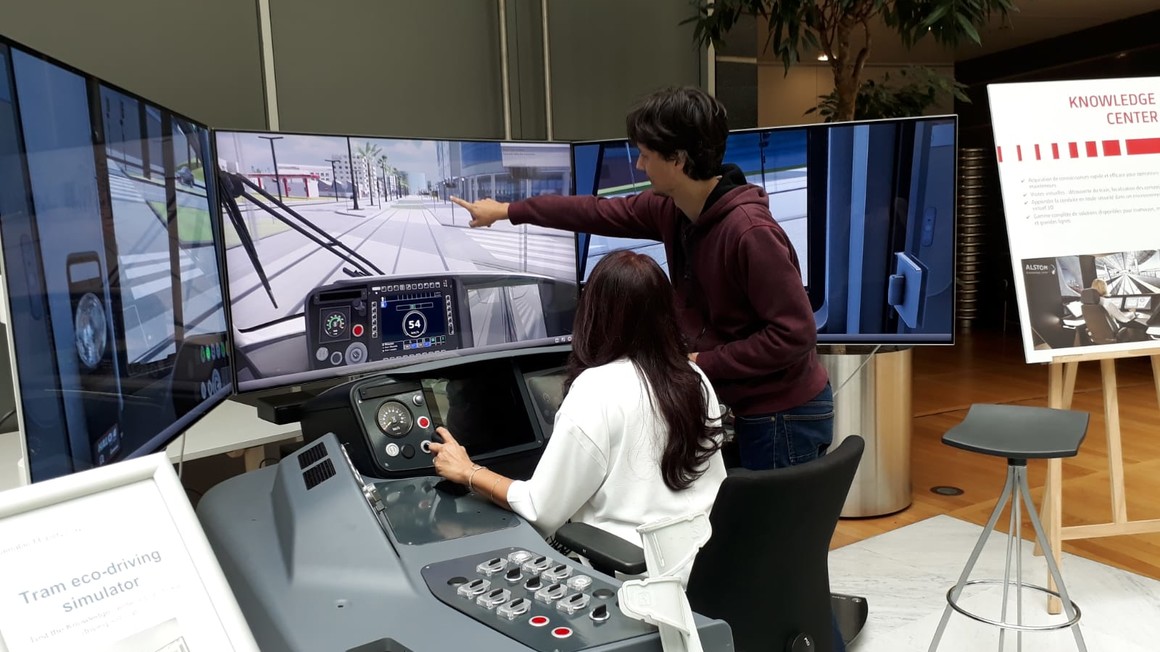Working together towards more sustainable mobility in transport

This article has originally been posted by Cécile Texier, VP Corporate Sustainability, Alstom on LinkedIn.
With the average earth temperature already about 1°C higher than pre-industrial levels and the first consequences clearly observable, climate change is not any more an assumption but a reality.
Despite joint efforts from governments, companies and citizens, CO2 emissions have not significantly decreased in many countries. Today, the transport sector alone represents 25% of worldwide emissions. Reinforced concerns on air quality have also led authorities to take concrete steps to trigger energy transition in transport.
There are encouraging signs. More than 50% of cars sold in Norway today are electric. Soft and alternative transport modes are developing in cities. Citizens feel more and more concerned about their own impact when travelling and opt for low carbon options or limit air travel when possible. However, a lot still remains to be done.
At Alstom, we have recognized some time ago the crucial role we can play in this transition by providing efficient, shared and electrical transport systems.
Over the years, we have raised the focus on eco-design in railway systems. We were first in the industry to announce a global target and systematically track the energy consumption in our solutions (17% reduction in average between 2014 and 2019). And we have put some unique solutions on the market such as our hydrogen regional train or SRS, our inovative static ground-based charging system in order to develop our low emissions portfolio.
In a few years’ time, the Company has positioned itself as a key player in the sustainable mobility arena.
Today we respond to the urgency of the situation, as well as to the growing expectations of our customers with a renewed commitment to innovation in greener mobility solutions. Our newly launched strategic plan Alstom in Motion sets the path for our continued leadership in this area.
The teams will continue to innovate for a full portfolio of green traction solutions as an alternative to diesel and accelerate the development of complete systems for electrical road mobility. We are also committed to strengthen our portfolio of eco-designed solutions and reduce the environmental footprint of our operations.
Among the environmental objectives we are targeting for 2025:
-
- 25%energy consumption of our solutions
-
100 %of the company’s electricity supply from renewables
-
100 %of our newly developed solutions eco-designed

"At Alstom, we have recognised the crucial role we can play by providing efficient, shared and electrical transport systems."
Our new values “Agile”, “Inclusive”, “Responsible” will shape the way we progress to reach these targets: adapting quickly, leveraging our differences, considering the impacts of the decisions we make to maximise long-term benefits for the company, employees, customers and society as a whole.
As individuals, we should also realise that our behaviors do have impacts and that each of us can participate by assessing our footprint and making sound travelling and commuting choices.
On average, individual carbon footprint represents about about 5 tons CO2 per person per year worldwide. A value that can be deeply impacted by travelling habits. Indeed, for frequent flyers, the transport share in carbon budget can raise quickly and represent up to 80%.
Reducing travelling whenever possible and favoring public transport and train is the first way to reduce individual emissions.
|
Return trip by plane |
CO2 emissions (tons) |
|
Paris - Johannesburg |
3 |
|
London – Milan or New York - Montreal |
0.3 |
|
Mexico – Rio de Janeiro |
3 |
|
Paris – Sydney |
4 |
|
Bangalore - Singapore |
1 |
|
Driving a standard car 15,000 km |
2-3 |
For commuting, favoring walking, biking (when safe), public transport, car sharing, and remote distance work will help reduce environmental footprint. For instance, working from home one day per week will reduce impact by 20%. Switching from cars to public transport can divide our footprint by 5 to 30. Finally, compensating emissions will also be an option to explore.
Ultimately, in order to meet the Paris Agreement target, each of us should decrease our annual carbon footprint to less than 1 tonne per year by 2050.
There is still a long way to go but now is the right time to start this collective journey.
Sustainable Mobility Days at Alstom
In order to raise awareness on sustainable mobility in our business activities and everyday life, we organized a Sustainable Mobility Day as part of the European Mobility Week at Alstom. On many sites, activities were held to focus on the latest developments in sustainable mobility and promote local initiatives to support everyone in reducing their environmental footprint.


